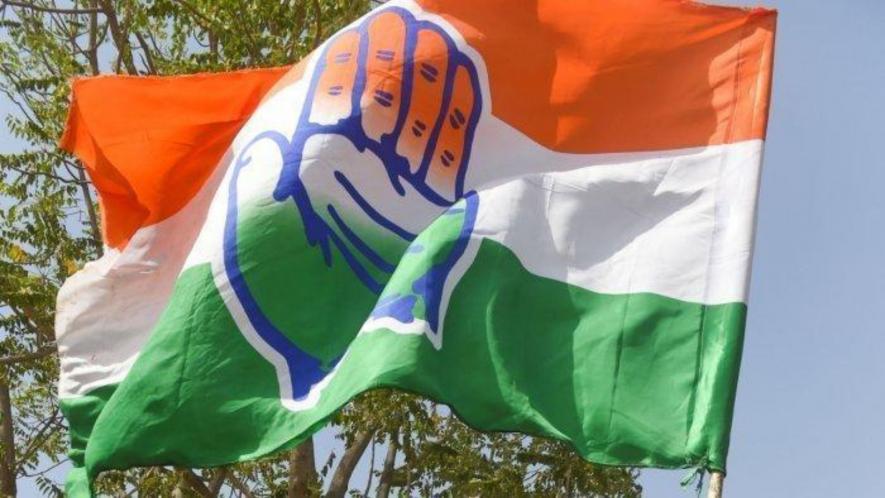Social Justice Outfits Can’t Blame Congress but Ignore own Failures

Representational Image. Image Courtesy: PTI
Ever since the Congress party’s defeat against the Bharatiya Janata Party (BJP) in the Madhya Pradesh, Rajasthan and Chhattisgarh assembly polls, Indian National Developmental Inclusive Alliance (INDIA) constituents are demanding it be “more accommodative”. They attribute the failure of the Congress party, the BJP’s primary opponent in these three states, to its refusal to provide space to the regional parties in electoral contests.
But in each of these elections, the Congress retained or improved its vote share compared with its performance in the 2018 elections. But it was not enough since the BJP could substantially improve its vote share. In a nutshell, the Congress ran well but ended as a runner-up against a better rival.
The BJP secured 48.55%, 41.69% and 46.27% votes against the Congress’s 40.40%, 39.53 and 42.23 in Madhya Pradesh, Rajasthan and Chhattisgarh, respectively, thereby widening the gap between the primary INDIA constituent and itself. As a result, while Bihar Chief Minister Nitish Kumar, the architect of the INDIA bloc, and the Rashtriya Janata Dal (RJD) president Lalu Prasad Yadav—were more circumspect about the losses, the Samajwadi Party chief, Akhilesh Yadav laid the blame squarely on the Congress party’s “arrogance”.
But would the results have been very different if the Congress had shared a few seats for the Samajwadi Party? The Samajwadi Party has secured less than one per cent of the votes in the three states, which suggests that the party of Uttar Pradesh had hardly any base in those states.
Of course, the Samajwadi Party is the most prominent opponent against the BJP in Uttar Pradesh. So are the RJD and Janata Dal (United) in Bihar. But in Madhya Pradesh, Chhattisgarh and Rajasthan, the contests are between the two largest parties, BJP and Congress, and they do not have regional equivalents to the Samajwadi Party, RJD or JD(U).
Lost Opportunity:
Instead of blaming the Congress party, the political parties representing the social justice plank must introspect. Leaders who symbolise the movements seeking equality and representation in the Hindi heartland, primarily Mulayam Singh Yadav in Uttar Pradesh and Lalu Prasad Yadav and Nitish Kumar in Bihar, adhered to the political philosophy of Ram Manohar Lohia and worked to empower the backward classes. Each of them gained political salience in the wake of the Jayaprakash Narayan (JP)-led ‘Total Revolution’, which replaced the Congress party in numerous states in the nineties. It is the sustained efforts Mulayam, Lalu, and Nitish made to organise and strengthen the socialist movement that increased their political power.
The JP movement produced three young leaders—Sharad Yadav in Madhya Pradesh, Mulayam Singh Yadav in Uttar Pradesh and Lalu Yadav and Nitish Kumar in Bihar. Sharad Yadav debuted in the Lok Sabha in 1974 after winning the by-election from the Bhopal seat as a JP-sponsored “people’s candidate”. He repeated his victory against the Congress in 1977. He was the right person to pursue the backward class movement in undivided Madhya Pradesh, as Mulayam and Lalu were in Uttar Pradesh and Bihar.
But instead of working among the marginalised classes in his own state, he migrated to Uttar Pradesh and Bihar. He represented Bihar’s Madhepura seat thrice in the Lok Sabha. Soon, he transformed into a dexterous theorist of social justice and rapidly lost the ability to extend the movement for social justice in his state. It is a bitter truth that he rode piggyback on a backward-class political movement established by Lalu and subsequently sustained by Nitish.
Now, the Hindutva party has made inroads among the backward communities, openly instrumentalising the outcome of the Babri mosque-Ramjanmabhumi battle in Ayodhya, raking up a fresh temple-mosque quarrel around Kashi Vishwanath-Gyanvapi in Varanasi, and promoting Mathura as the birthplace of Lord Krishna. First, the BJP promoted the late Kalyan Singh, the former chief minister of Uttar Pradesh, as a Hindutva icon. Now it has Keshav Prasad Maurya, a prominent backward class leader, to keep up the Rashtriya Swayamsevak Sangh’s anti-minorities thrust. Indeed, the BJP has befriended the Bahujan Samaj Party (BSP) of Mayawati and numerous smaller political outfits, ultimately gaining the upper hand in India’s most populous state.
Although the Samajwadi Party is still a potent force against Hindutva in Uttar Pradesh, it is in Bihar that the BJP has failed to attain the success it desires. This is thanks to Lalu Prasad Yadav’s aggressive pushback against majoritarianism through the nineties. The BJP shared power with Nitish Kumar after 2005, but the JD(U)’s “growth with justice” formula—assuring preferential treatment to the marginalised sections and social harmony— forced the BJP to play second fiddle to its “core” governance model. The BJP could not impregnate the backward-class fortress on a big enough scale to attain independent majorities in Bihar. Even today, there is little chance of it contesting to win independently in Bihar.
But in Madhya Pradesh, Rajasthan, and Chhattisgarh, the leadership void among the backward classes is evident, and the RSS-BJP have a verdant playing field. The BJP’s party began when it promoted Uma Bharati, the Hindutva version of a backward-class leader, in the 1990s. Three-time Madhya Pradesh Chief Minister Shivraj Singh Chouhan is also a backward-class leader. If the leadership has arrived, can victory ever be far behind?
Challenges and Silver Linings:
The BJP’s spectacular victories just before the 2024 Lok Sabha polls give its cadres and supporters reason to be upbeat and confident about next year. But it is still premature to predict the return of Prime Minister Narendra Modi for a third term. Indeed, it would be foolhardy to rule out the victory of the INDIA alliance, with Congress securing around 40% of the votes and holding its fort in the three Hindi heartland states.
Nitish Kumar summed it up well when he assured attendance at the next INDIA alliance meeting. He said, “The BJP has won…but the Congress, too, has earned good votes… I simply want all INDIA parties to finalise seat-sharing and carry on their campaign to defeat the BJP,” he said.
The Congress party broke from the past when it shed its baggage of trying to woo and represent the social elites and wholeheartedly backed the caste census, including enhanced quotas in the jobs and educational institutions. With employment and social justice as its core planks, the main national opposition party still has the goodwill and trust of the minorities, for whom Hindutva is, naturally, anathema.
But the key to success lies in INDIA parties being willing to support the Congress strongly in its strongholds. No doubt, the Congress would do well to appreciate the strengths of regional parties in Bihar and Uttar Pradesh and leave enough space for them to battle the BJP.
“Apart from working out the alliance at the top levels, the opposition has the challenge of establishing harmony among the backward classes by convincing them that the caste census, the promise of employment and the resolve to raise reservation limits will improve their lives,” said the veteran socialist leader and RJD national vice president Shivanand Tiwary. His advice is clear: challenges have also opened the door for opportunities.
The author is a senior journalist, media educator, and researcher in folklore. The views are personal.
Get the latest reports & analysis with people's perspective on Protests, movements & deep analytical videos, discussions of the current affairs in your Telegram app. Subscribe to NewsClick's Telegram channel & get Real-Time updates on stories, as they get published on our website.






















